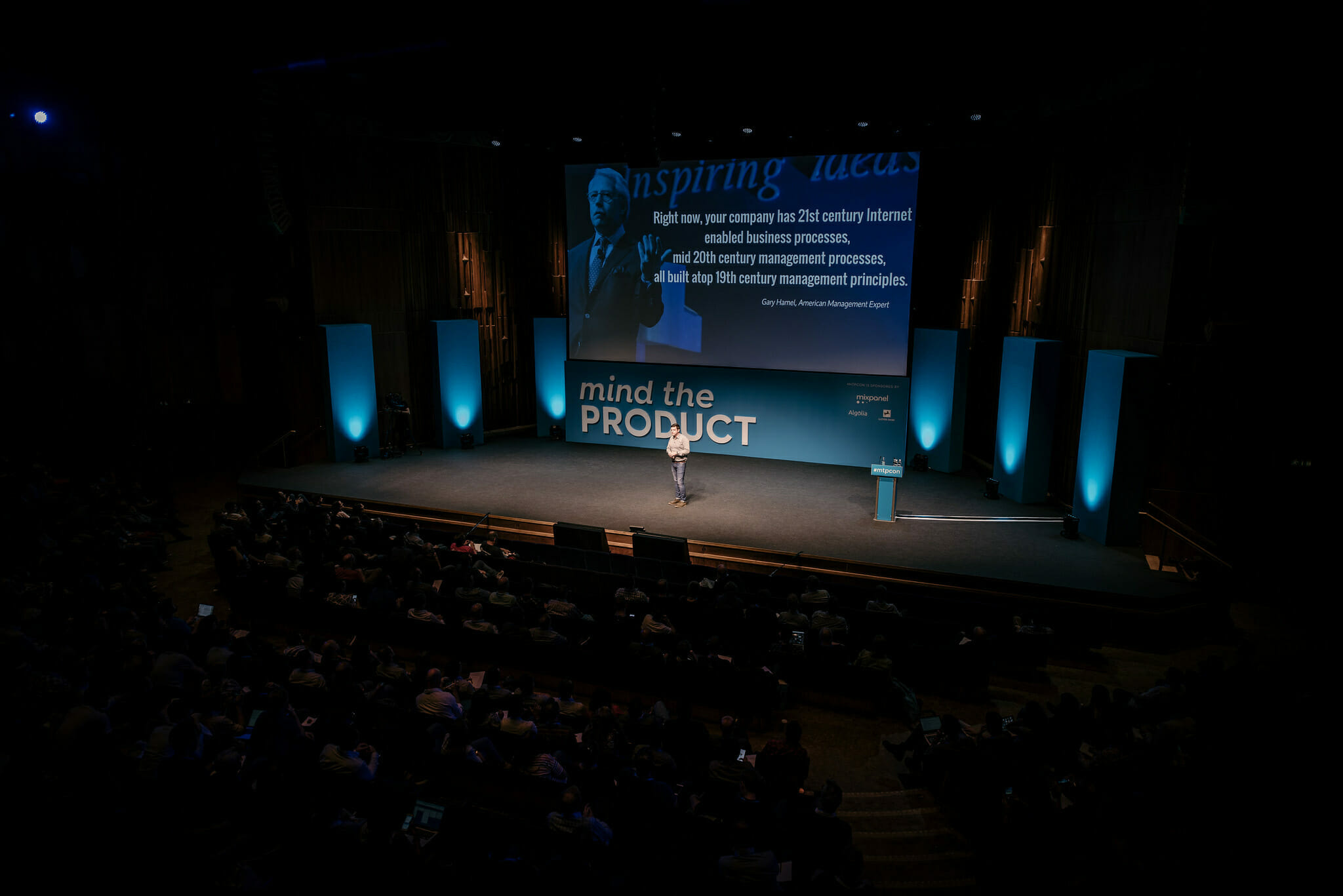The great thing about building out a product team from scratch is that you set the tone for how Product functions in a business. However it’s an exercise that comes with lots of big questions you need to answer and more than a few pitfalls, even if you think you’ve thought everything through thoroughly before you start.
It can seem overwhelming – because you need to work out:
- Both what the business needs now, and what it will need in the future
- What your current staff need to do and who you would like to hire
- How you set your team up for success, including how you organise and operate
No part of this process is easy – it can feel like every decision you make is a difficult one. We speak to some experienced product leaders who have been in this position and find out what they’ve learned about building a product team out from scratch.
TL;DR
- Start with the mission
- Observe and listen
- Think about what the company needs in the future, not just what it needs now
- Put some hiring and onboarding structure in place
Start with the mission
As ever, the business goals and mission is the best place to start. Think about your competitive advantage and where the business is today. Merissa Silk, currently Staff Product Manager at Onfido, has been the first product manager and built out teams in a number of early-stage companies. She comments: “Think about what the company needs now and what it might need in six months’ time and in 12 months’ time.” She warns that it can be really tricky to weigh up what you need.
You’ll probably want to hire at different levels. You’ll want senior team members who can hit the ground running and more junior people who can grow with the company. Merissa finds using Kate Leto’s role canvas really helpful in working this out, “it’s a great way for the management team to think about what they need”. “You might think ‘today I need someone who can manage engineers, I don’t have capacity for that’ and rush to hire a product owner because they’re used to working with engineers, they know how to use JIRA, they know how to build a roadmap. And it’s what the business needs now. But would that person then have the instincts to take you through the next six months and then 12 months and beyond? It’s hard to tell, and it’s why I like using role canvas as the lens to look through and build out what I need.”
Mind the Product’s Managing Director Emily Tate says you also need to determine how you’ll split the product: “Will it be by feature set? By goals, like by growth team and engagement team? By platform? Defining how you divide the product could impact the type of people you want to hire.” Emily says there isn’t a single right way to do this – and you might not end up with the right structure the first time – but you should articulate what you’re aiming for and why.
Observe and listen
It’s likely that some people will already be “doing product” in some shape or form when you arrive at a company to spin up a new team or set up a product function.
Becky Yelland, VP of Product at Infogrid, has also been the first product hire in a business a number of times in her career and underlines the importance of a new arrival questioning the status quo in a way that doesn’t shake people up too much. “You may have someone who’s come over from a customer service role who’s trying to take on bits of the product function, or developers who’ve got into bad habits and make decisions without checking with product.” It’s important to unpick what’s being done without clipping anyone’s wings, she says. “If someone is discovering a new skill and loving it, you can’t just come in and tell them they’re doing it all wrong. You want to try and unpick and see what the good stuff is.” Becky says she doesn’t have a formal structured approach for doing this – she starts by observing and listening.
More tricky, in Becky’s experience, is to come into a company to set up a team when the CEO has been the product person to date. Maybe the CEO decided to bring in a product person, and they’re happy that you’re there. They’re willing to let go and you can work with them. Equally, maybe the CEO has been instructed by investors to bring someone else in and they’re not ready to let go? In this case Becky recommends that you work out what the CEO loves about the product discipline and include them in your process. Eventually they will come to see themselves as a stakeholder and sponsor rather than involved in the day-to-day. “You have to have broad shoulders and wide arms,” she says.
You also need to work out your involvement in the day-to-day work. As Emily says, if you’re tasked with building out a sizeable team early on, then you’re probably fully focused on hiring, strategy, and leadership. “But if you’re hiring a single product manager or just a couple, there is a good chance you’ll still be product-managing projects yourself.”
Who do you hire?
Consultants and freelancers can be a useful resource. Merissa says there are plenty of talented people who want to work remotely and who are available today. If you’re willing to look for remote workers and use one of those remote hiring platforms, it’s much easier to get great talent and relatively quickly.” In the past she’s used companies like Code Control and Remote.com to broaden the geographic scope.
But often there are bigger choices to be made. Says Merissa: “Freelance consultants can be a great help but it can be a tricky choice. In an ideal world you want to hire for what’s ahead of you in a few months’ time, but many startups and early-stage businesses don’t have the luxury of that mindset.” She emphasises that hiring for short-term issues is often where things go wrong. “Maybe you bring in someone who’s only good at delivery, but who doesn’t have those strategic or visionary skills. That becomes a problem in a few months’ time.”
Unfortunately the opposite is also true, she says. “You might find someone who is trying to move up from senior product manager to lead and you sell them the future of the company and their career future. They take the job on the possibility of the future, but the product work often takes longer than you sold them and they get resentful.” Merissa says she’s made both these kinds of mistakes in the past.
Do you put the band back together?
There’s always the temptation to call on people you’ve worked with in the past. There are pros and cons to this approach. They’re a known quantity, you trust them and know you can work well with them. That can really speed up the time to productivity.
But you should also think about whether an old, tried-and-tested team will be as innovative as a new one. Merissa says: “It’s so important to bring in new voices, ideas, and new folks to collaborate with so that you don’t get stuck in your ways. That’s definitely a risk.”
Emily adds that you shouldn’t anchor your perception of someone on the last time you worked with them. “Hopefully they have continued growing. But it can be tempting to assume they continue to have the same weaknesses and bias your interactions. Make sure you’re giving them a fair chance to prove what they can do.”
If it’s one person you’ve worked with before, make sure others don’t feel left out or overlooked. Emily explains: “Having history isn’t a bad thing. There will probably be times where you give that person an important project because you’re confident they can handle it. But don’t push all the best opportunities their way, leaving the other team members with less interesting work.” Becky adds: “I hire for diversity of thought, I want to hire people that I’m going to learn from. If you do it well, and in a way that isn’t cliquey and exclusive then it’s fine. But quite often, I’ve seen people get their little band around them and disenfranchise the rest of the team.”
Put some hiring structure in place
No matter how small the product function, you need some standardised onboarding in order to set people up for success. “Even a lightweight process is fine,” says Merissa. “How do you bring that person into the team? What kinds of team rituals do you expose them to on their first day, week, month, quarter at the business so that they’re on a path to success?.” If you use some framing structures, such as the role canvas, a hiring process that has core questions and steps for every candidate, and an onboarding structure, then you’ve made a start.
Ceremonies can be particularly useful in distributed teams, she adds, and the structure that comes with scrum ceremonies is helpful. “Other rituals are also useful. For example, with my last team, we had a number of onboarding rituals that every new person went through. They had a virtual coffee with the entire team on their first day. They’d have a 90-minute session with either me or the MD. We would give them a company overview and talk about their role, their collaborators, our ways of working. We’d talk about who they can ask for help and support, and show them their 90-day plan.”
Merissa’s advice is to think about the hiring process as a product. “Put your product manager hat on. Think about how you would approach it as a product manager. It’s a mindset that can really help you if you’re doing it for the first time.”
Other considerations
Start by immersing yourself in the customer – you and your hires should spend as much time with customers as possible. “It goes right back to the Clayton Christensen theory of jobs to be done,” says Becky, “what is the customer need? If you’re building a team up from scratch go out to the source.” It also means you’re modelling good product behaviour and leading from the front.
Understand the technical impact of your product – and its technical limitations. As Becky says: “A product person is only as good as their architecture. I’ve worked in places where no matter how good the team was, we couldn’t change anything at a sensible speed.”
Manage stakeholders – You may well find that the sales team has an awful lot of influence, especially in a new company where everyone is focused on revenues rather than profit. The sales team naturally looks for quick conversions and asks customers what they want to see in the product. “The problem is the customer doesn’t always know what they want. They just know what the problem is,” says Becky. “You have a product roadmap that is curated by a salesperson and a customer, not by product. Product then ends up being delivery.”
It’s tricky to move away from, she adds. It means collecting evidence and data to help you develop and demonstrate the voice of the customer. It needs total commitment and backing from the CEO to be achieved. We’ve covered this previously on Mind the Product, there are further resources at the end of the article.
Push your stakeholders to work with the new team rather than funnelling things through you as soon as possible. Emily says: “The new product managers may still come to you for advice or context, but reinforcing that they are in charge of their domain is important.”
Be your authentic self – If a team is to work in psychological safety then product leaders need to be their authentic selves at work. So be open to being vulnerable so that the team knows they can fail safely.
It can be difficult to hand over to a new team, especially if you’ve been the solo product person. Emily says you should really challenge yourself to determine when you need to step in. Work out when you know key information others might not know and when to let others put their own fingerprints on the product. “Err on the side of too much empowerment and create a safe space for experimentation and failure,” she says.
A final thought about psychological safety, which is so important when you’re building a new team. As Becky says, if you want people to be responsible and accountable, they must be able make mistakes. She says: “If they don’t know that then they will always have an element of fear. And that fear will always hold them back – they’ll play safe and they won’t make the best decisions.”







Comments
Join the community
Sign up for free to share your thoughts